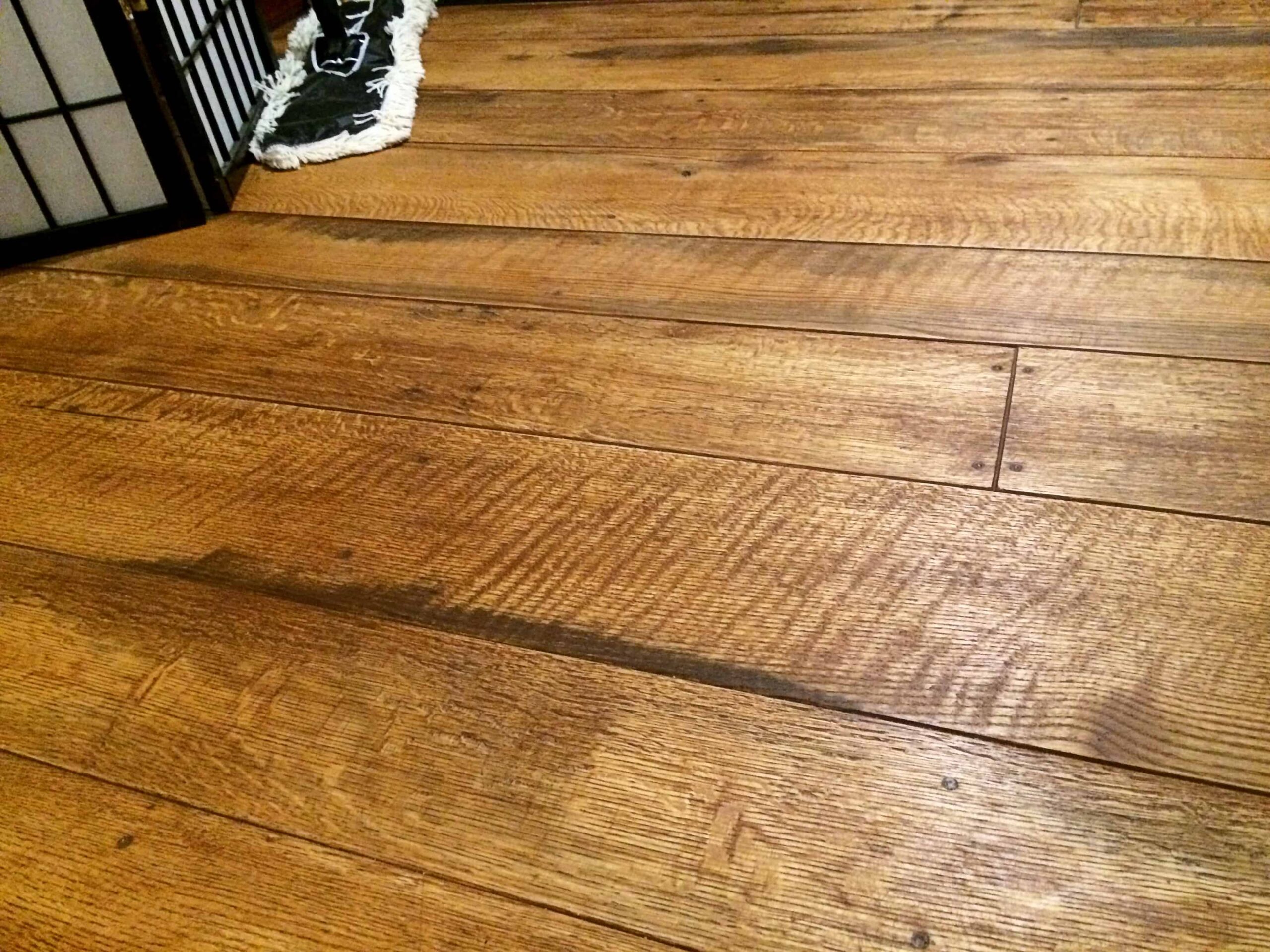Hardwood Flooring: Understanding the Different Grades 101
Hardwood flooring grades are confusing. Although the National Wood Flooring Association has very specific unfinished wood flooring grade guidelines, contractors, installers, architects, dealers and homeowners often ignore those grade definitions out of convenience or ignorance.
Additionally, when correct flooring grade terms are used incorrectly, it leads to misunderstanding and flooring problems. Unfortunately, based on my experience, contractors and homeowners typically start reading up on flooring grades after there is a problem. Typically, this is to assign or avoid blame.
Hardwood flooring grades have their own particular look and characteristics. They should be understood by everyone involved before installation starts.
4 Reasons Why Hardwood Flooring Grades are Perplexing.
- Hardwood flooring grades and hardwood lumber grades use the same terminology but they have completely different definitions. Hardwood lumber grades are regulated by the National Hardwood Lumber Association. Hardwood flooring grades come from the National Wood Flooring Association. Accordingly, lumber companies use hardwood lumber grader to make hardwood flooring which is then graded using eponymous flooring grades with different standards. Thus, many lumber companies are also ignorant of proper wood floor grades.
- Currently, many hardwood floors are made to proprietary standards and use proprietary grades. These grades may use NOFMA (National Oak Flooring Manufacturers Association) or NWFA terminology but are not necessarily the same. The NWFA’s hardwood flooring grading system was developed decades ago specifically for mass-produced oak strip flooring. Thus, the grades are not as useful to homeowners or installers as they are to large strip hardwood flooring plants.
- Previously, there were multiple flooring organizations claiming authority over wood flooring grades: The National Oak Flooring Manufacturers Association (NOFMA), The National Wood Flooring Association (NWFA) and the Wood Flooring Institute (WFI). This blurred the grading standard goal and disoriented installers as well as flooring dealers & wood flooring distributors.
- The NFWA is the preeminent wood flooring organization. However, it is very expensive to join as manufacturer. Accordingly, as of August 2021, there are only 21 unfinished solid manufacturer members. Meanwhile, there are tens of thousands are small, medium and large manufacturers of wood flooring operating outside of that organization.
Hardwood Flooring Grades: What are They?
In short, hardwood floor grades represent levels of appearance uniformity.
Here is an basic layperson’s summary of hardwood flooring grades. This is not comprehensive, complete or binding. However, if you are completely new to unfinished hardwood flooring, this will get you up to speed. I’d say this is accurate for 75%+ of the mass market flooring you’d find at a retail flooring store like Lumber Liquidators.
The 3 most common unfinished oak hardwood flooring grades are:
- Select Grade. Select flooring is usually the longest, cleanest and most color consistent oak wood flooring available off-the-shelf. There should be no open knots and a lot of 2-4′ long planks that have a relatively uniform color tone. Nothing wild in color/grain or abstract.
- #1 Grade. #1C grade wood flooring is slightly shorter than select. Most of the planks will be 1 1/2-2 1/2 feet long. The longer planks will have some color or grain variation and possibly intact knots or mineral streaks. In general, the shorter lengths planks will look similar to select grade, only shorter.
- #2 Grade. #2C oak flooring is slightly shorter than #1C. The planks may be mostly 1-2′ long. Additionally, expect both open and intact defects (knots). #2 has wild color and grain variations from plank to plank. Accordingly, it is often marketed proprietarily as rustic.
Things to Know about Wood Flooring Grades
If you want a clean, consistent look, select is your grade. Longer planks mean fewer grains to match. The plank clarity adds to the consistent clean look.
Instead, if you prefer a wild abstract appearance, #2 is your grade. Shorter length planks means more grains to match up. Additionally, each plank has a wide range of looks.
*Important – Hardwood floor grades are based on a collection of flooring planks. Grading is an aggregate determination. Do not assess grade or ask an installer to assess floor grade by looking at a single plank. Doing so is inaccurate.
Red Oak 1 vs 2
A completely clear plank of 18″ long 1/2 x 2 Red Oak wood flooring may appear in a #2C bundle, #1C bundle, Select bundle or Clear bundle. This may be a on-purpose (ie the manufacturer has too much upper-grade flooring or the bundle needs some clear footage to balance out some lower grade planks) or it may be an oversight. Regardless, the crucial point is that a single plank tells you very little about the grade.

